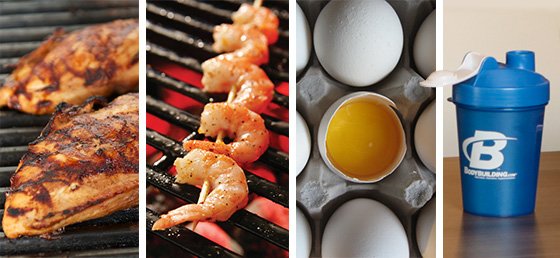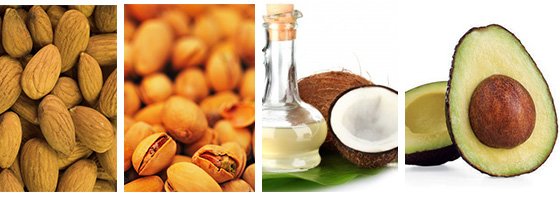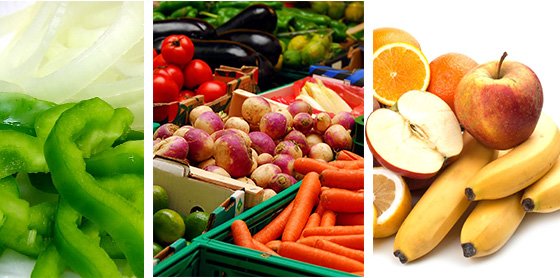CRAIG CAPURSO
CRAIGCAPURSO
CRAIGCAPURSO
If your goal is to build a big, strong, and lean body, all the training expertise in the world won't help if you aren't ingesting the right fuel in the right amounts. Your body needs specific nutrients to recover and grow after intense workouts. Simply put, if you want tobuild muscle and gain strength, you have to eat like it.
The Built by Science nutrition program is effective, progressive, and easy to implement. It's the perfect complement to the Built by Science training program and is based on the latest nutritional science. This is a mass-building nutrition plan, but don't mistake it for some free-for-all "dirty bulk." I've engineered this system to help you get big without adding excessive body fat.
The problem with the way most people bulk is that the fat they pack on negatively impacts insulin-sensitivity, making it harder for them to develop the body they desire. This plan is different. It helps you progressively eat larger amounts, so your body has time to adjust to the extra calories. This way, your body won't freak out metabolically and store the extra energy as fat.

YOUR CALORIC GAME PLAN
Let's get started by establishing your baseline diet. Because of the individual variations in metabolism and activity levels, I prefer not to use predictive calorie equations. Instead, I find it more effective to start by determining how many calories you're eating now, and adjust the diet from there.
This nutrition plan will require you to track both calories and macronutrients down to precise numbers for the next six weeks. If this is new to you or you're not confident in your ability, take the time to educate yourself. Invest in an app, get to know websites like the USDA's National Nutrient Database or NutritionData.com, or read a guide on how tocalculate and track your nutrition.
If you already know your daily calorie intake, you're ahead of the curve. If you don't know your average calorie intake, keep a food diary or use online software to log all the food you eat for the first three days of Built by Science. Some smartphone apps will determine your three-day average calorie intake for you. If you're going manual, you can use an estimated average as your base diet number.
To jumpstart the muscle-building process, you're going to add 300 calories to your basecalorie intake. Over the next two weeks, monitor your body weight, measurements (chest, neck, arms, etc.), and body fat skin folds if you have access to calipers. At that point:
If your body is growing and you are gaining weight but not excessive fat, add another 300 calories to your daily intake.
If, on the other hand, you are not gaining weight, add 500 calories.
Repeat this process every two weeks, adding more and more calories.

YOUR GET-BIG GUIDE
TO JUMPSTART THE MUSCLE-BUILDING PROCESS, ADD 300 CALORIES TO YOUR BASE CALORIE INTAKE. MONITOR YOUR WEIGHT, MEASUREMENTS, AND BODY FAT FOR TWO WEEKS. IF YOU'RE GAINING WEIGHT BUT NOT FAT, ADD AN ADDITIONAL 300 CALORIES. IF YOU'RE NOT GAINING WEIGHT, ADD 500 TOTAL CALORIES.
THAT SOUNDS LIKE A LOT OF CALORIES...
It's true: As your calorie intake gets higher, you will eventually start to gain more fat. At this point, you can do one of two things.
One option would be to stop adding calories. However, I'm in favor of a technique I learned from Dr. Layne Norton. He recommends simply adding much lower amounts of calories. In this case, we're going to add just 50 calories to your daily intake each two weeks.
This small number of calories will essentially get absorbed in of daily activity, but over the course of a couple of months, the 50 calorie incremental increase will add up to a significant number of calories for your body to use in muscle production.
Divide your calories into 3-4 meals a day, spaced out by approximately 4 hours. For simplicity's sake, keep your meals approximately equal in size, with one exception: your post-workout meal. This crucial meal should contain around 20 percent more calories than your other meals.
I hear your question: What kind of calories should I be eating? So let's get into the macros.
PROTEIN
Keep your protein intake at around .75-1.0 grams per pound of bodyweight throughout the next six weeks. This may actually be less than some bodybuilders are ingesting now. My advice is to take the money you'll be saving and put it toward higher-quality food.

Why so low? Research shows that approximately 0.75 g/lb is the threshold for muscular hypertrophy to occur. We're trying to optimize your protein intake for growth in Built By Science, and I'm simply not convinced that if you're eating high-quality protein, excessive amounts do any good.
Space your protein intake out across your meals in a relatively even fashion, with a minimum of 30 g at each meal. Use a variety of protein sources. Here are my favorites:
FAT
Dietary fat serves a number of crucial purposes. One is to provide a concentrated form of energy. Certain fats also act as signaling molecules and hormones in the body. For your continued health and growth, it's crucial you get enough fat during the next six weeks of intense physical training.
Once you've established your baseline caloric level, calculate your fat intake so that it makes up around 30 percent of your total calories. From there, the percentage will increase. As you add more calories to your diet, make 150 of every 300 extra calories come from fat. There are 9 calories per 1 gram of fat, so if you're making a 300 calorie leap, you'll add 15-17 g of fat. For a 50-calorie jump, add around 5 g.
Unlike protein, which is more or less constant throughout the day, strategize your fat intake to be inversely proportional to the total amount of carbohydrates in a meal. In other words, higher-carb meals will have less fat, and lower-carb meals will have more fat.

There are 3 main types of fat: polyunsaturated, monounsaturated, and saturated. Don't overemphasize one over the others, but rater eat a full variety of fats. Some of my favorite fat sources are:
- Olive oil
- Canola oil
- Avocado
- Almonds
- Walnuts
- Pistachios
- Macadamia nuts
- Butter
- Coconut oil
- Flaxseed oil
- Cheese
CARBOHYDRATES
The final piece to the macronutrient puzzle, and probably the most confusing, is carbohydrates. In order to take advantage of different foods' caloric densities and use nutrient timing to our benefit, I like to separate carbohydrates into two groups.

1
STARCHES
Starches are faster-digesting, calorie-dense carbohydrate foods like:
- Potatoes
- Sweet potatoes
- Quinoa
- Rice (white or brown)
- Sprouted grain bread
- Oats (rolled or steel cut)
- Pasta/noodles
- Tortillas
- Kalmut
- Wheat berries
2
FRUITS AND VEGETABLES
The fruits and vegetables group, on the other hand, contains slower-digesting, higher-fiber foods that have a smaller amount of carbohydrates and less caloric density. I place beans and legumes such as lentils in this group. Other foods to choose from here include:

- Blueberries
- Raspberries
- Strawberries
- Apples
- Oranges
- Pears
- Spinach
- Cabbage
- Broccoli
- Cucumbers
- Peppers
- Brussels sprouts
- Lettuce and greens
- Green beans
- Carrots
- Scallions
- Mushrooms
- Onions
- Tomatoes
- Lentils
- Black beans
- Kidney beans
- Chickpeas
Properly integrating these foods into your daily meals is simple. Here are the general rules I use to guide carbohydrate consumption:
- Eat fruits or vegetables at every meal.
- At breakfast and directly following your workout, add in starchy carbohydrates.
- At meals where you don't eat starchy carbohydrates, eat more fat and more fruits and vegetables.
After accounting for protein and fat in your baseline calories, you'll make up the remaining calories through carbohydrates. And when you add more calories to your meal plan, as previously discussed, add 150 calories of carbohydrates per 300 calories, to go along with the 150 calories of fat.
There are approximately 4 calories in every gram of carbohydrate, so this means you will add 35-40 g of carbs to your meal plan with each 300-calorie jump. If you're down to a 50-calorie jump, scale back to 12 g of additional carbs.
THE BUILT BY SCIENCE MEAL PLAN
Now that you know how we're going to prioritize and arrange your calories and nutrients, let's tie it all together with some sample calculations and a meal plan.
For a 180-pound male, the basics would look like this:
- Base diet: 2700 calories
- Base protein intake (1g/lb bw): 180 grams (720 calories)*
- Base fat intake (30% of calories): 90 grams (810 calories)*
- Base carbohydrate intake (remaining calories): 292 grams (1170 calories)*

No comments:
Post a Comment